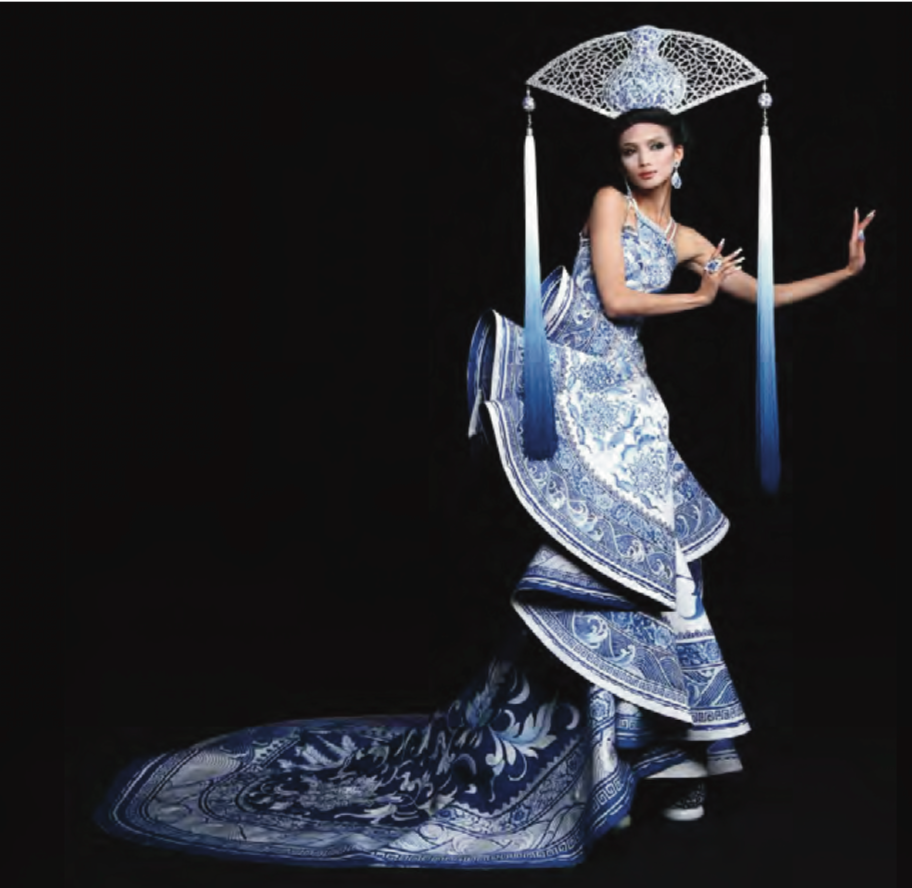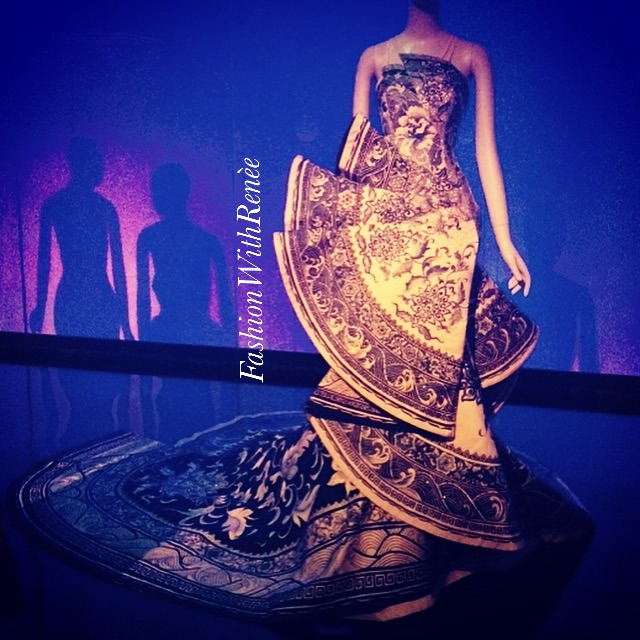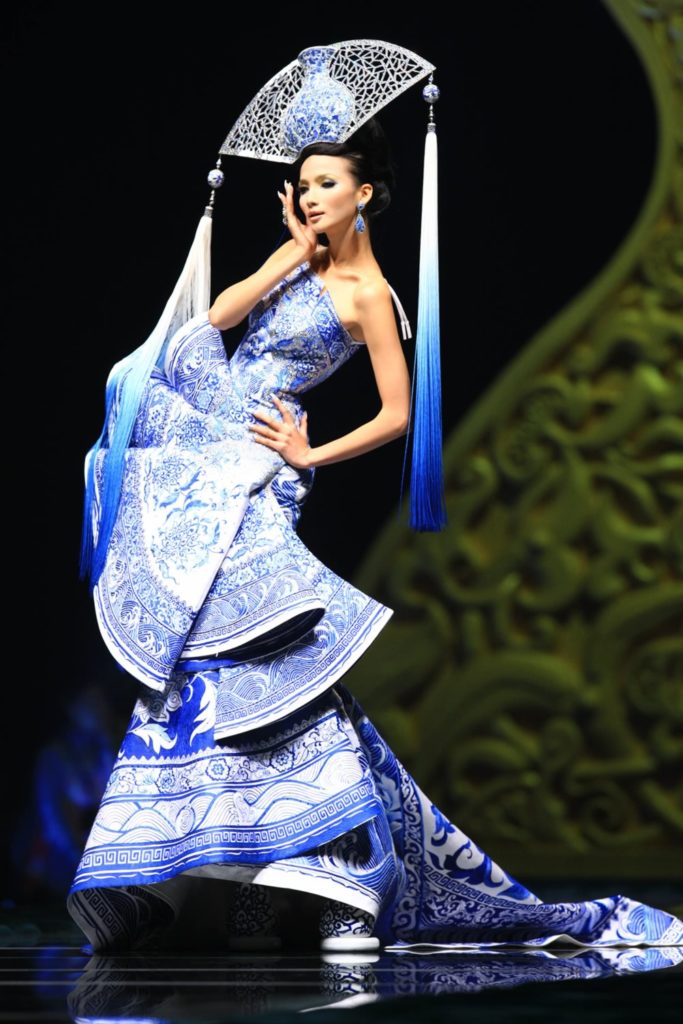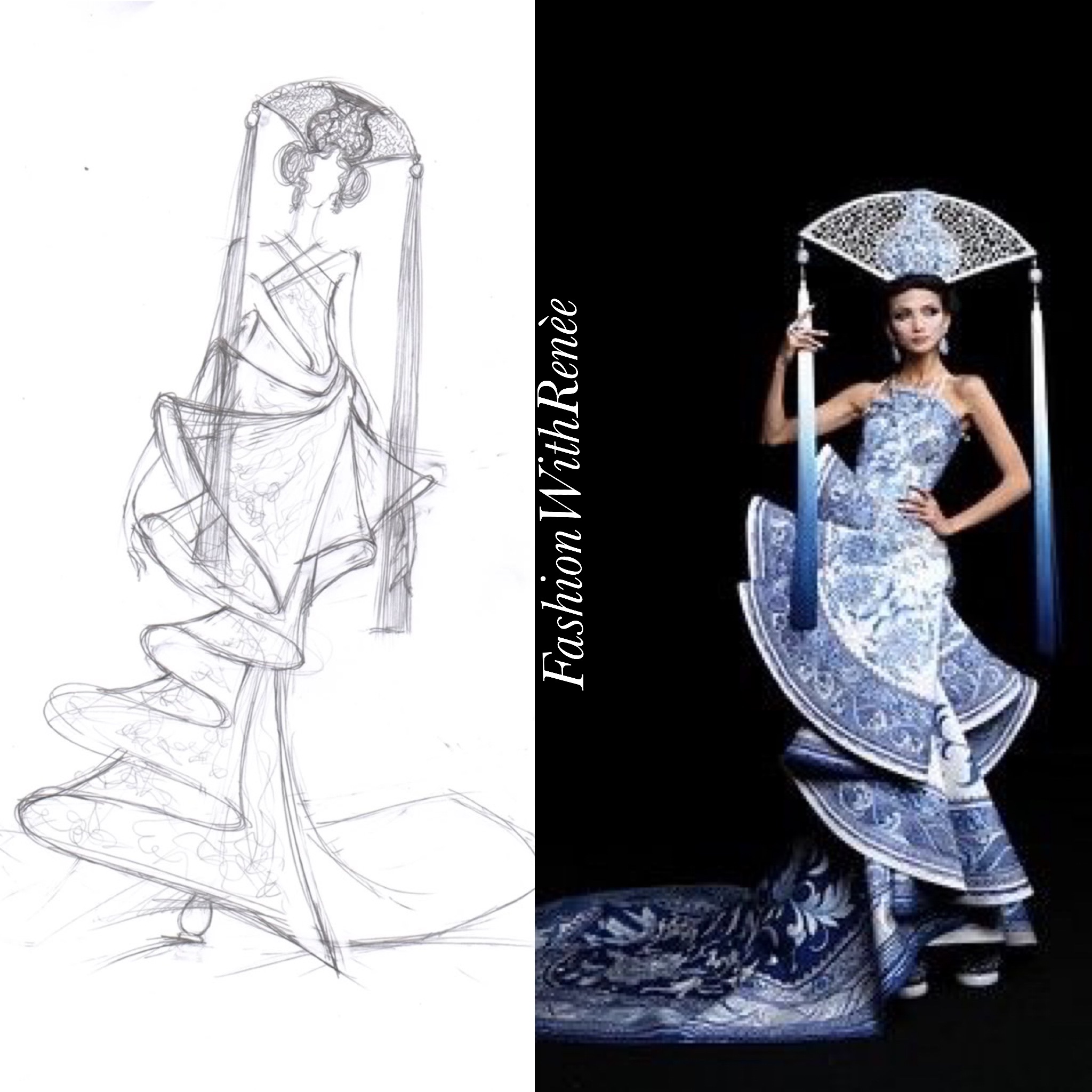Guo Pei’s “Blue and Porcelain” gown
This sculpted “Blue and Porcelain” gown was designed by Guo Pei for her 2010 “1002 Nights” collection. It is also sometimes referred to as the “Ming vase gown.” Both titles refer to its inspiration from blue and white China, which originated during the Ming Dynasty (1368–1644.)


Pei’s creations blur the line between fashion and art. Some of her gowns take upwards of 60,000 hours over the course of several years to create. This outstanding gown embodies 10,000 hours of work and drew inspiration from the shape of a Chinese folding fan. Folding fans were a must have accessory during the Ming Dynasty. The Arts & Crafts Museum Hangzhou notes “The mid-Ming dynasty (1368-1644 AD) of China witnessed the popularity of folding fans, which evolved into an identity symbol for dignitaries and nobilities, an accessory for the literary to adorn their elegant life, and a carrier for artists and crafters to express their talents and craftsmanship.”


This gown reflects important elements of material Chinese culture (fans and porcelain) alongside important non-material cultural aspects though its patterns and motifs. These include a large peony at the bodice, lotus blossoms, ruyi, meander and mountains and waves. It is made from blue and white silk-satin and features hand-painted motifs. It is embellished with thousands of Swarovski crystals and is detailed with blue and white silk Chinese embroidery. This type of embroidery was nearly a lost art, but Pei searched to find the remaining artisans skilled in this practice who in turn helped train others.

While this gown is stunning is photos, it is truly breathtaking in person. The way the crescent pipe folds stand on their own remind me of pieces a broken plate.

The head piece that completes this look is equally impressive. It features the outline of a Chinese fan which contains geometric cutouts that reflect the cracked porcelain vase pieced together at its center. This entire piece is covered in silver Swarovski crystals. Two Baoding balls hang from each side of the fan and oversized silk tassels extend downward, each melting from white to deep blue.

Aside from the the many museums this gown has been displayed at, it was also notably worn by Miss China 2012, Diana Xu Jidan, where it won Best National Costume at the Miss Universe pageant.
Guo Pei is China’s most famous couturier and is sometimes referred to as “The McQueen of China.” She has been sewing since childhood and graduated from the Beijing School of Industrial Fashion Design in 1986. She spent the next decade designing for major manufacturers before launching her own label, Rose Studio in 1997. 2015 put Pei on the map in America when her work was chosen for the “China: Through the Looking Glass” exhibition at the Met and Rihanna wore one of her creations to the Met Gala. Her Paris Haute Couture debut came in 2016 and that same year she was named one of TIME magazine’s 100 Most Influential People and one of the Business of Fashion’s 500 most influential people shaping the global fashion industry. Pei recently opened a new studio on the Rue Saint Honoré in Paris. If you love fashion, I recommend viewing her recent collections which are all absolutely jaw-dropping and magical.
Sources:
https://www.vogue.com/fashion-shows/designer/guo-pei
https://artsandculture.google.com/story/the-art-of-folding-fans-i/CwLCXR2PrRNTIg
https://www.scadfash.org/sites/all/themes/scadfash/images/Guo-Pei-lesson-plan.pdf

